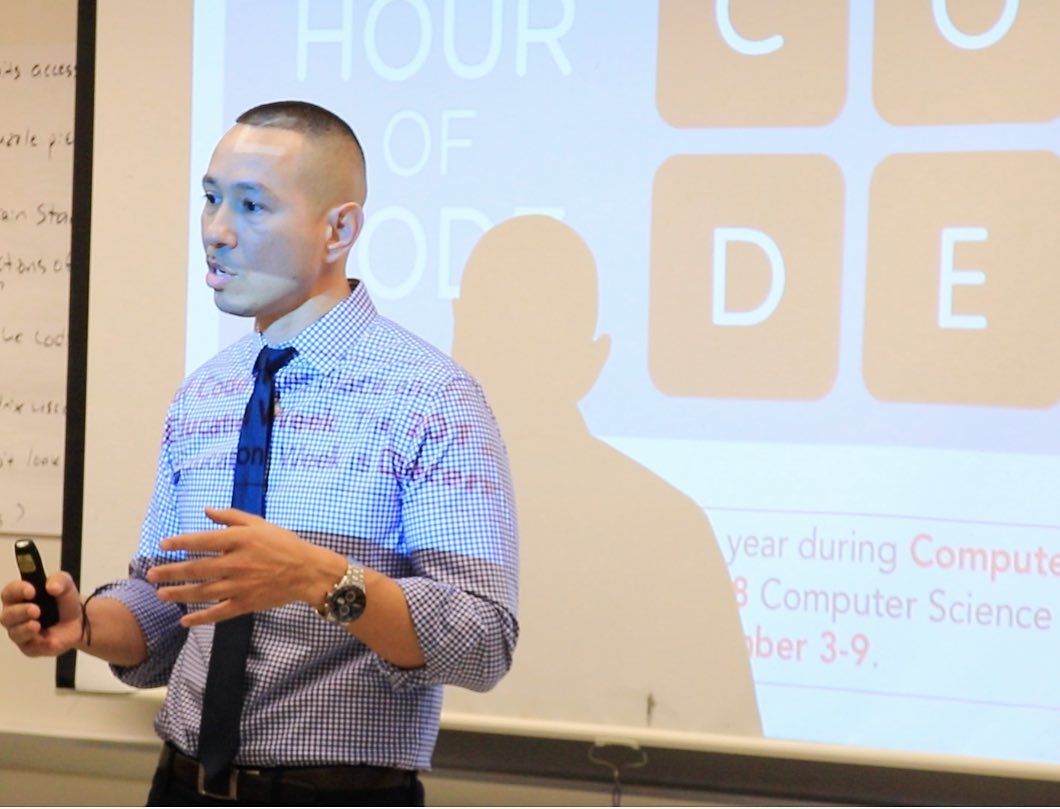Robotics in the Classroom
This teacher taught students how to build and program their own game designs in tandem with computational thinking using the Sphero Bolt and littleBits Code Kit. Learn how he used these tech experiences as scaffolding for even more complex CS activities.

Who: Jorge Valenzuela, ‘Getting Computer Science Ready’ teacher
Where: MathScience Innovation Center of Richmond, VA
What: Teach Game Design and Programming with Sphero Bolt and littleBits Code Kit
In my class, all Computer Science experiences are first modeled through mini-lessons connected to student’s previous experiences. I then support that effort through guided activities such as learning stations, pair programming, programming with the teacher, the use of tutorials, and play (even dance parties). Students learned about computational artifacts and algorithmic design. During a Computational Thinker challenge to “create a children’s game to teach coding foundations” one small group built and programmed a working “Rockstar Guitar” another a hot potato’esque toy. Students brainstormed using flowcharts and discussion, used their own art to personalize the code kits, built their game and rehearsed a presentation explaining their project for an event with friends and family. In keeping the work real-world and giving it purpose (i.e., having to explain and teach their work to younger peers, professionals, school administrators, and parents) — the students were compelled to put their best foot forward.
Positive Results
All of the students became more aware of how programs are created in tandem with building a model or creating a game. They also learned the associated careers involving software development and how to apply computational thinking with and without the edtech. Not only did this create an engaging hands-on lesson for our current learning purposes, but it served as inspiration for the future.
[The Best New Hour of Code Resources for 2019]
Tools and ideas to transform education. Sign up below.
The Biggest Challenge
We avoided most of the usual pitfalls by planning lessons very well while keeping in mind the experience and comfort levels of students. Students could form small groups or take on the challenge solo. Because of advance individualization, the lessons went fairly smooth and we were able to adjust as needed.
Finding Funding
We were very fortunate to receive grant funding through an esteemed business partner of the MathScience Innovation Center, DuPont.
Pro Tip
Don’t worry about being an expert, but do practice enough to be able to facilitate the intended learning of students. Also, do not be afraid to learn alongside your students. One great way to do this naturally is to bring in experts as needed to both help with the coursework and provide an in-person example of someone working in the field.
Tech Tools
The Code Kit by littleBits
The Code Kit App
The Sphero Bolt
Links to Connect With Jorge
Website: www.lifelonglearningdefined.com
Blog: medium.com/@jorgedoespbl
Twitter: @JorgeDoesPBL
Facebook Page: LifelongLearningDefined
Instagram: @JorgeDoesPBL
YouTube: https://www.youtube.com/channel/UCpFCeG0NRHLcReqg9cdZEjg
Book: “Rev Up Robotics — Real World Computational Thinking in the K-8 Classroom” Coming in December 2019 through ISTE.
Sascha has nearly two decades of experience as a freelance journalist writing for national magazines, including The Washington Post, LA Times, Christian Science Monitor, National Geographic Traveler, and others. She writes about education, travel and culinary topics.

